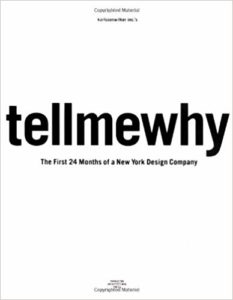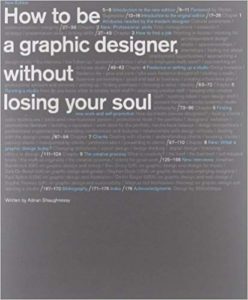I discovered Eric’s products back in 2015, when I bought his Omnigraffle stencils “Website Flowcharts”, which help you design beautiful sitemaps in minutes. Since then, he has continued to publish great stencils, templates and now, physical products catered to the UX Design community. I asked Eric if he could share his experiences with us, and he gladly accepted; so here is the conversation we had:

1. Could you tell us a little bit about yourself and the projects you work on?
My name is Eric Miller and I run a design studio, cleverly named Eric Miller Design (ericmillerdesign.com). We work primarily in UX and visual design, mostly for websites and complex applications. Along with our studio, we have a shop called UX Kits (uxkits.com) that sells digital assets and physical products for designers. Our card decks were developed to give designers, product managers and other creatives a hands-on activity to help in the early stages of building digital products.
2. What attracted you to working on web/UX design vs other media, like print?
Initially, my work was not focused on just web and UX design. Along with that, I was designing for print, creating songbooks and other materials, doing more branding, and even writing, photography and video editing. This was before “UX design” was a thing. Over time, more digital work came to us than print, and I found I most enjoyed being involved in the entire creative process, from discovery through information architecture, concepts, prototypes and visual design.
“There’s absolutely nothing wrong with “family and friends” projects. That is how I got my first work…”
3. Can you tell us a little bit about your process when working a new client’s project?
While our process can change based on the project, it generally includes the following: Discovery, Content Strategy, Information Architecture, Wireframes and Prototypes, Visual Design and Development Support.
Discovery is where I get to know the client and their customers, including conducting interviews and creating personas and journeys.
During content strategy, we work to understand their brand message and voice (and help develop it, if that’s part of the project), and determine the content needed and a site map.
In IA [Information Architecture], we use our UX Kits to demonstrate the overall site / application architecture and user flow.
We then go through several wireframe sprints, delivered as InVision prototypes.
In visual design, we polish those wireframes to a finished product, sometimes using mood boards, and ultimately deliver a style guide. Finally, we work with the development team to support them as needed. That is of course a very abbreviated explanation, but the general idea.
4. Who where the people that influenced you the most when starting your career?
Some early influences (though I can’t exactly remember who I found when) were Dan Mall, Tina Roth Eisenberg, Jason Santa Maria, Simon Collison, Veerle Pieters, Dan Cederholm, Jonathan Harris and Scott Hansen, who’s music (Tycho) I still listen to while I work.
5. Do you have a couple of books you could recommend to UX or Web Designers that are NOT the typical recommendations?
I can think of 2 at the moment:
[row]
[column md=”6″]
KarlssonWilker’s tellmewhy: The First 24 Months of a New York Design Company
Details on Amazon
[/column]
[column md=”6″]
How to Be a Graphic Designer without Losing Your Soul
Details on Amazon
[/column]
[/row]
6. Can you describe to us your “must have” tools that you regularly use for web design?
Sketch, Omnigraffle and Photoshop for design, InVision for prototypes and our UX Kits for flows and wireframes (sorry for the self promotion, but true). We use Todoist to manage tasks and Slack to communicate with clients and team members. We also use Google Docs for most documents, and have recently been using Coda for spreadsheets. And pencil and paper.
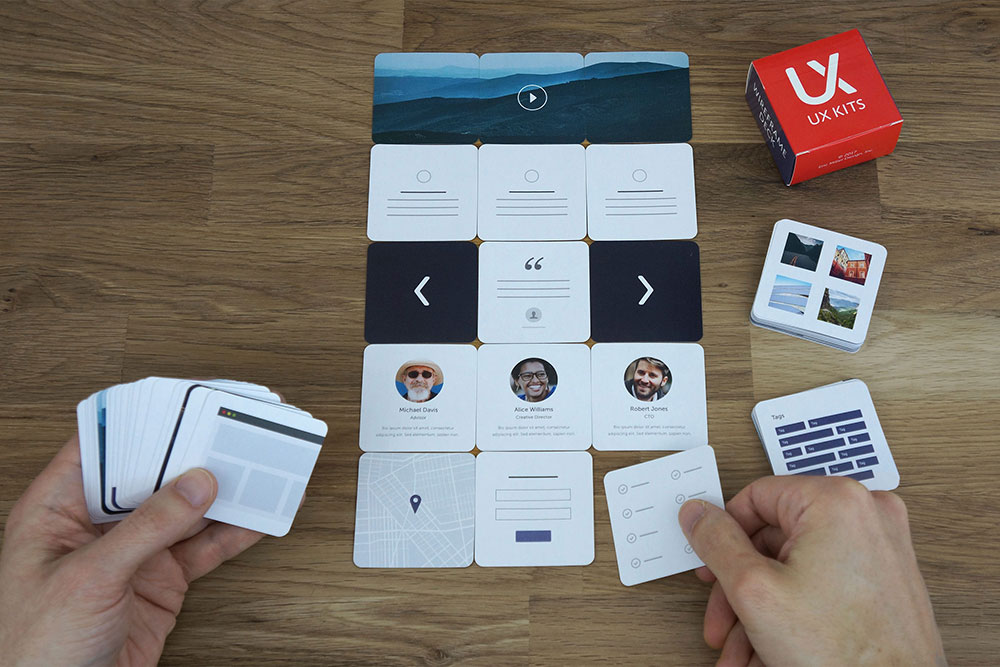
7. How did you come up with the idea for your entrepreneurship project, UX Kits?
Our first kit, the website flows, came out of something we created for use with clients. Graffletopia (graffletopia.com) approached me to design a stencil for sale, so I made those flows more product-friendly and launched on their site, along with my own site (which was not called UX Kits yet). Fortunately, it was clear pretty quickly that this could be a company and not a single product. Shortly after, I branded the products as UX Kits.
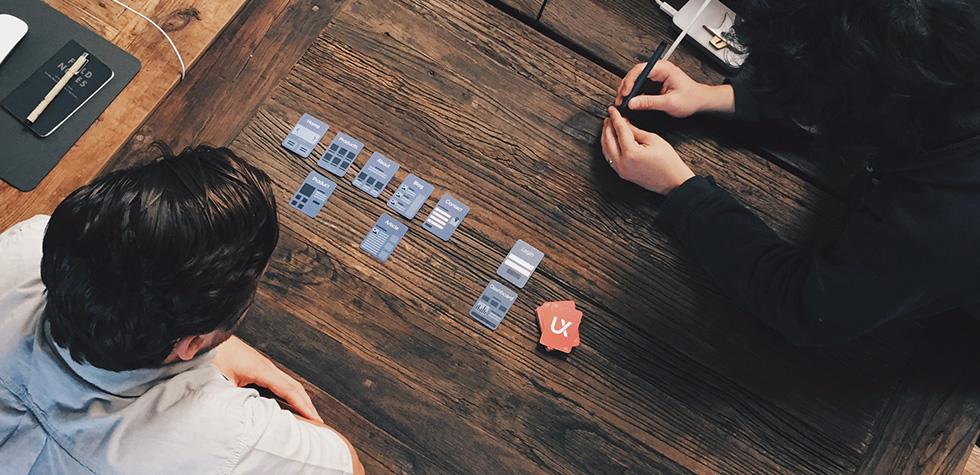
8. On that note, how was your transition from selling digital products to physical ones?
It is definitely a learning experience. Digital products are relatively easy to manage. Once you’re in physical products you have to deal with production, packaging, shipping, and related to all of that, profit margins. Things can and will go wrong in each stage of the process, but I’ve always loved a printed product even though I work primarily in UX, UI and web design.
9. Do you have any cool anecdotes from your customers that used your products on the field?
[we are going to let the customers speak for themselves…]
[row]
[column lg=”6″ md=”12″ xclass=”px-3″ ]
https://www.instagram.com/p/Bkg42GggFED/
[/column]
[column lg=”6″ md=”12″ xclass=”px-3″ ]
https://www.instagram.com/p/BAHz1vHoa7G/
[/column]
[column lg=”6″ md=”12″ xclass=”px-3″ ]
https://www.instagram.com/p/Bpy7EmEB9a8/
[/column]
[column lg=”6″ md=”12″ xclass=”px-3″ ]
https://www.instagram.com/p/Bo9t3_3DR0s/
[/column]
[column lg=”6″ md=”12″ xclass=”px-3″ ]
https://www.instagram.com/p/BfO4FHTBDx-/
[/column]
[column lg=”6″ md=”12″ xclass=”px-3″ ]
https://www.instagram.com/p/BvMiI4jlU1M/
[/column]
[/row]
10. Can we expect any future products coming soon from UX Kits?
I almost always have something in the works, and currently that includes a couple digital products and another deck. So yes… but too soon to share. Sorry!
11. What would be your advice for a beginner, starting to learn how to design websites by herself or himself?
There’s absolutely nothing wrong with “family and friends” projects. That is how I got my first work, and that led to referrals of “friends of friends”, and eventually just… clients. I can still trace back some current clients to original referrals from friends that go back 20 years.
12. Do you have any hobbies or activities to decompress when not working or designing?
Aside from spending time with family, I like to do anything around the house or yard. I always have a pile of unfinished projects around fixing, painting or building something, or designing a space at home.
I highly recommend Eric’s products, both the digital templates that I heavily used on my Omnigraffle days, and the cards, that I have found an incredible useful tool for teaching UX Design concepts:
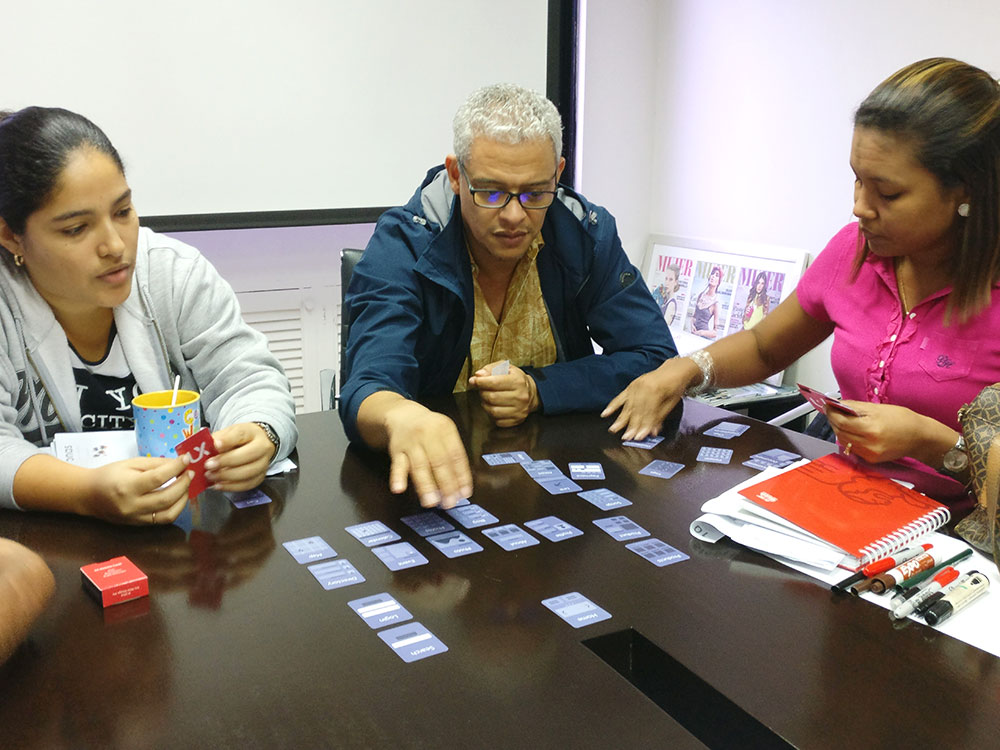
A quick tip if you’re an Adobe XD user: you can get the Adobe Illustrator stencils and copy paste the elements to XD. No need for a XD specific stencil/template file.
If you want to learn more about their products, visit them at:







